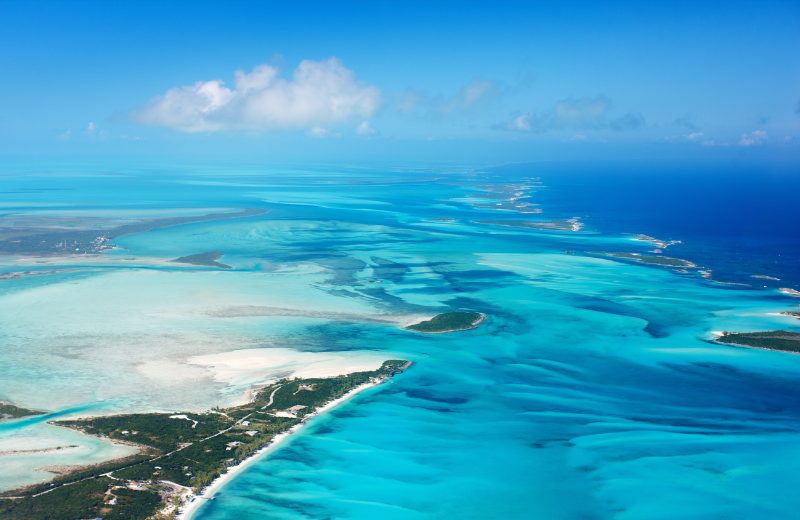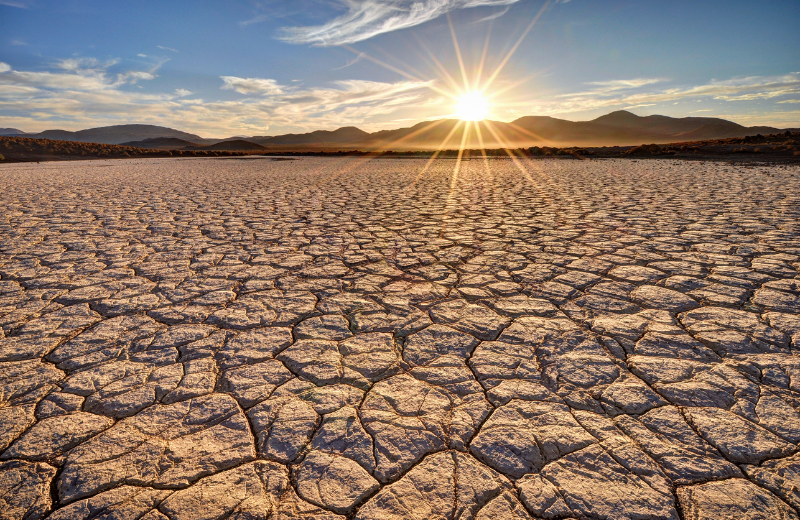If you’ve ever glanced at a world map or studied geography, you’ve likely come across the term Tropic of Cancer. But what does it actually mean? Why is it important, and how does it affect our world? In this post, you'll explore the meaning and significance of the Tropic of Cancer, along with some fascinating facts.
Jump to:
- What is the Tropic of Cancer?
- How Did the Tropic of Cancer Get its Name?
- Why is the Tropic of Cancer Important?
- Where is the Tropic of Cancer?
- Tropic of Cancer: Countries and Continents
- What’s the Difference Between the Tropic of Cancer and the Tropic of Capricorn?
- Interesting Facts About the Tropic of Cancer
- Frequently Asked Questions About the Tropic of Cancer
- Study Astronomy for £29
Recommended for you!
Best SellersWhat is the Tropic of Cancer?
The Tropic of Cancer is one of the five major circles of latitude marked on maps of Earth. It lies at approximately 23.5° north of the Equator and is the most northerly point at which the sun can be directly overhead. This phenomenon occurs once a year during the June solstice, marking the beginning of summer in the northern hemisphere.
The Tropic of Cancer is an imaginary line, but its role in shaping the climate, seasons, and geographical distinctions around the world is very real. This latitude divides the Earth’s tropical and temperate zones, giving rise to vastly different weather patterns and ecosystems.
How Did the Tropic of Cancer Get its Name?

The name of the Tropic of Cancer comes from an ancient connection to astrology. Thousands of years ago, when the sun was at its most northerly point during the solstice, it appeared in the constellation Cancer. Hence, the name Tropic of Cancer was given to this line of latitude.
Interestingly, due to the gradual shift in Earth’s axis (a process called precession), the sun is no longer in the constellation of Cancer during the solstice. Today, it’s found in the constellation of Taurus. However, the name remains as a historical marker of its original celestial position.
Why is the Tropic of Cancer Important?
The Tropic of Cancer plays a significant role in geography and climate. It marks the northern boundary of the tropics, the region of Earth that receives the most direct sunlight throughout the year. As a result, this area typically experiences warm temperatures year-round, fostering lush rainforests, deserts, and tropical climates.
On a larger scale, the Tropic of Cancer helps define Earth’s climatic zones. Everything between the Tropic of Cancer and the Tropic of Capricorn (located 23.5° south of the Equator) is referred to as the tropics. This region is known for its consistent daylight hours and seasonal variation in rainfall rather than temperature.
Where is the Tropic of Cancer?
The Tropic of Cancer runs across the Northern Hemisphere, cutting through several continents and oceans. If you were to look at a world map, you would see this line crossing North America, Africa, and Asia. This line of latitude passes through several significant countries, influencing diverse climates and ecosystems, from deserts to tropical rainforests.
Tropic of Cancer: Countries and Continents

The Tropic of Cancer passes through various landscapes, from the Sahara Desert in Africa to the rainforests of Southeast Asia. Its influence on local climates can be observed by the types of vegetation, animal life, and even human activity along its path. Here is a list of the continents and countries it traverses:
- North America: Mexico, Bahamas
- Africa: Mauritania, Mali, Algeria, Niger, Libya, Egypt
- Asia: Saudi Arabia, UAE, Oman, India, Bangladesh, Myanmar, China, Taiwan
Many of these countries rely on seasonal monsoons or desert ecosystems, largely shaped by their proximity to the Tropic of Cancer.
What’s the Difference Between the Tropic of Cancer and the Tropic of Capricorn?
While the Tropic of Cancer marks the northern boundary of the tropics, the Tropic of Capricorn does the same in the southern hemisphere. Located at 23.5° south of the Equator, the Tropic of Capricorn is where the sun is directly overhead during the December solstice. Together, these two lines form the boundaries of the Earth’s tropical zone.
This tropical zone is distinct from the temperate zones found further north and south, where the sun’s rays hit at a more slanted angle, leading to cooler temperatures and distinct seasons.
Interesting Facts About the Tropic of Cancer

The Tropic of Cancer may seem like an abstract line on a map, but it’s packed with interesting details that highlight its significance. Here are some fascinating facts about this important latitude:
- The Tropic of Cancer is not fixed: The location of the Tropic of Cancer isn’t constant. It shifts slightly over time due to changes in the Earth’s axial tilt. This movement is gradual, occurring over thousands of years.
- It affects time zones: Countries near the Tropic of Cancer often have little variation in daylight hours throughout the year, unlike regions further from the Equator, where daylight changes dramatically between summer and winter.
- Some of the world’s largest deserts lie along it: The Sahara Desert in Africa and the Arabian Desert in the Middle East both sit near the Tropic of Cancer, creating some of the hottest and driest regions on Earth.
- It crosses major bodies of water: The Tropic of Cancer also passes through significant parts of the Atlantic, Pacific, and Indian Oceans.
- It defines global tropical regions: Many of the world’s tropical rainforests and diverse ecosystems, such as the Amazon Rainforest, exist within the zone defined by the Tropic of Cancer and Capricorn.
Recommended for you!
Best SellersFrequently Asked Questions About the Tropic of Cancer
What is the latitude of the Tropic of Cancer?
The Tropic of Cancer is located at approximately 23.5° north of the Equator. This latitude marks the most northerly point at which the sun can appear directly overhead during the June solstice.
Which ocean does the Tropic of Cancer pass through?
The Tropic of Cancer passes through three major oceans: the Atlantic, Pacific, and Indian Oceans. Its path influences marine ecosystems and climatic patterns in these regions.
How far is the Tropic of Cancer from the Equator?
The Tropic of Cancer is about 2,600 kilometres (1,600 miles) north of the Equator. This distance helps divide the Earth into tropical and temperate zones.
Which capital city is closest to the Tropic of Cancer?
Muscat, the capital of Oman, is one of the closest capital cities to the Tropic of Cancer. Its proximity to this line of latitude impacts the region's hot desert climate.
Why is the Tropic of Cancer named so?
The Tropic of Cancer was named because, over 2,000 years ago, the sun appeared in the constellation Cancer during the June solstice. Although the sun is now in Taurus during this time, the name has remained historically significant.
What happens when the Sun is overhead at the Tropic of Cancer?
When the sun is directly overhead at the Tropic of Cancer during the June solstice, it marks the start of summer in the northern hemisphere. This is the point where the northern hemisphere is tilted closest to the sun, resulting in the longest day of the year.
How does the Tropic of Cancer affect global climate?
The Tropic of Cancer helps define the tropical climate zone, where regions experience warm temperatures year-round. Countries along this latitude are often subject to extreme heat and seasonal variations in rainfall, shaping ecosystems from deserts to rainforests.
Study Astronomy for £29
If you’re fascinated by the way the Earth is structured and want to learn more about the stars, why not explore our Astronomy Diploma Course at Centre of Excellence? It’s perfect for anyone curious about the cosmos, and right now, you can enrol for just £29!













